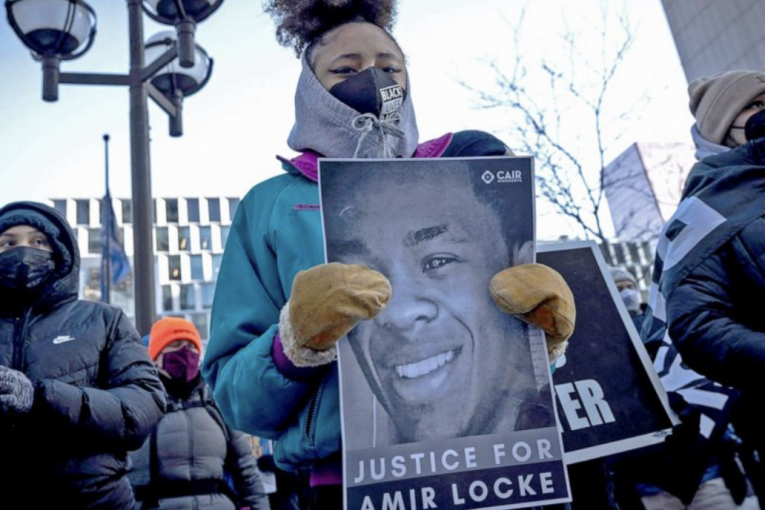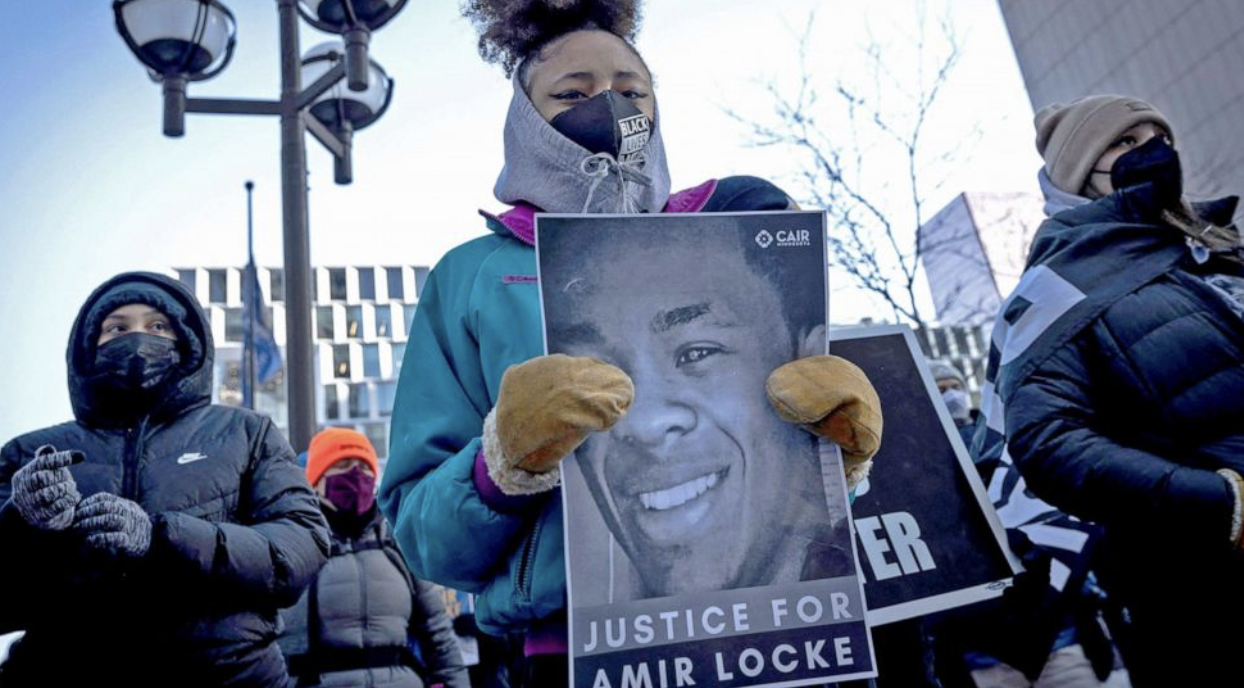

By Ava Schwartzapfel and Priana Aquino
SAINT PAUL, MN— Minnesota Attorney General and Hennepin County Attorney announced Wednesday they will not be filing criminal charges regarding the shooting death of Amir Locke by Minneapolis SWAT Officer Mark Hanneman.
Before his death, Locke had big plans for his future, including following in his father’s music footsteps and pursuing a career as a hip-hop artist. He had also planned to move to Dallas to be closer to his mother.
Locke’s killing is due to his mistakenly believed involvement in an ongoing case in Saint Paul. Locke was not listed as an official suspect in the case and was not named in any of the search warrants. A “no-knock” warrant was used in this case, resulting in his death.
When the Minnesota Attorney General’s Office was deciding whether or not to file criminal charges, it based their decision on whether there was sufficient admissible evidence to support a criminal charge. The Office stated that it was not their role to evaluate whether the no-knock warrant was appropriate.
Under Minnesota Statute section 609.066, deadly force may be used only if an objectively reasonable officer would believe, based on the totality of the circumstances known to the officer at the time and without the benefit of hindsight, that such force was necessary to protect the peace officer or another from death or great bodily harm.
For a peace officer’s use of deadly force to be authorized in the state of Minnesota, there must be, at minimum, a threat of death or great bodily harm which: 1) can be articulated with specificity; 2) is reasonably likely to occur absent action by the law enforcement officer; and 3) must be addressed through the use of deadly force without reasonable delay.
When applying this law to the case, police encountered an individual unknown to them who, they said, held out a firearm underneath a blanket: a situation that constitutes a clear threat, they said, justifying the killing.
The circumstances that Officer Hanneman was experiencing at that moment were listed as 1) they were conducting a search warrant related to a homicide in which high-powered rounds had been used; 2) the suspects remained at large; 3) the suspects were known to possess firearms and engage in violent conduct; and 4) an unidentified individual was holding a firearm pointed in the direction of at least one officer with others present.
As a result of this context, the Minnesota Attorney General’s Office deemed that any other reasonable officer would have perceived an immediate threat of death or great bodily harm that was reasonably likely to occur, and would have acted with force.
The Attorney General’s Office credited the Minnesota Bureau of Criminal Apprehension for its investigation, and Jack Ryan, the police practices expert who conducted a review of the evidence.
“Any time law enforcement interacts with the public, all parties should be able to go home safely,” stated the press announcement Wednesday, adding, “No-knock warrants are highly risky and pose significant dangers to both law enforcement and the public, including to individuals who are not involved in any criminal activity.”
The Minnesota Attorney General’s Office acknowledged the violent nature of the no-knock rule, and urged both law enforcement and policy makers to weigh the benefits of the law enforcement tool.
“Once again, we again express our deepest condolences to the Locke family for their immense loss,” writes the Attorney General’s Office. Nobody should have to lose a loved one like this.”
